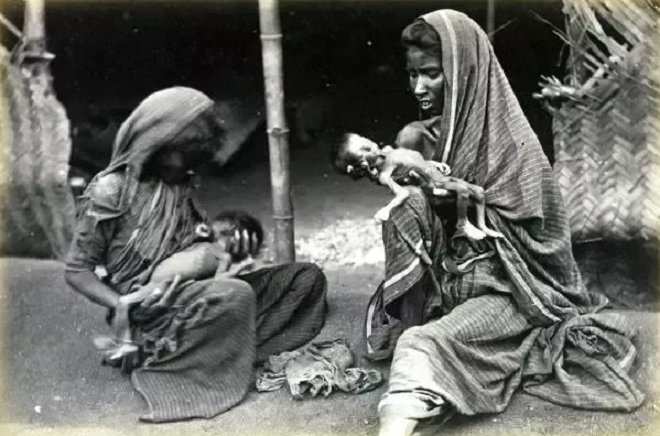122 years ago, most parts of Rajasthan did not receive even a single drop of rain throughout the year. In Rajasthan, farmers who depend on monsoon farming are not able to sow their crops due to lack of rain. During this period neither a single grain of grain was produced nor fodder was available for the animals. Areas that were dependent on rainwater harvesting for drinking purposes started migrating due to acute shortage of drinking water.
In the year 1899 there was a severe famine in North India. The most prominent among these was Rajasthan. Jaipur, Jodhpur and Bikaner regions of Rajasthan were badly affected by the drought. Due to this famine that occurred in Vikram Samvat 1956, it is also called ‘Chhappaniya Famine’ in the local language. This famine is recorded in the British Gazetteer as ‘The Great Indian Famine 1899’.
122 years ago, most parts of Rajasthan did not receive even a single drop of rain throughout the year. In Rajasthan, farmers who depend on monsoon farming are not able to sow their crops due to lack of rain. During this period neither a single grain of grain was produced nor fodder was available for the animals. Areas that were dependent on rainwater harvesting for drinking purposes started migrating due to acute shortage of drinking water.
At this time grain became the most valuable commodity. The grains hidden in utensils started being stolen. People were forced to sell their children in exchange for grains. Meanwhile, famine started wreaking havoc everywhere and at every level. Hunger spread in every house, everywhere children, old and young were seen hungry and suffering from hunger. There was a similar heart-wrenching scene in every area of Rajasthan. The hunger day and night had made everyone, children, old and young, very weak.
Grass bread, snake and mongoose hunting
Due to lack of drinking water people started dying due to dehydration. People and animals started dying on the roads due to hunger and thirst, fleeing in the 50-52 degree Celsius temperature of the desert. Due to hunger and thirst people were forced to eat bread made of grass, hunt snakes and mongoose and grind dry bark of trees. During this time some people became cannibals due to hunger.
Due to this crisis, anarchy spread in Rajputana stronghold. King Maharaja of Mewar was also seen struggling with this crisis. After this, the kings of Mewar did many famine relief works, of which the provision of free food was the most important. Kings opened shelters for their subjects at various places so that hungry people could save their lives by eating there, but at that time, due to limited means of transportation and lack of means of communication, help could not reach the people completely.
Due to the provision of free food to the public, the treasuries of many rulers became empty and they fell into huge debts, the Sethos also opened their grain stores by the orders of the kings, but all proved inadequate in the face of the terrible crisis of famine. During this period, lakhs of people died of hunger and thirst within a year.
According to an estimate published in the ‘Imperial Gazetteer of India’ in the year 1908, one million people died of starvation and related diseases in British India alone, i.e. in the areas directly ruled by the British Government. According to historians, this figure was around 40-45 lakhs. This does not include the casualties caused by this famine in the princely states of that time. In the year 1899, Lord Curzon was appointed the Viceroy of India. During this period, some relief camps were opened for famine affected people in the areas under the British Government, but only about 25 percent people could get limited relief. The ‘Chhappaniya Famine’ proved to be devastating on a large scale for India.
